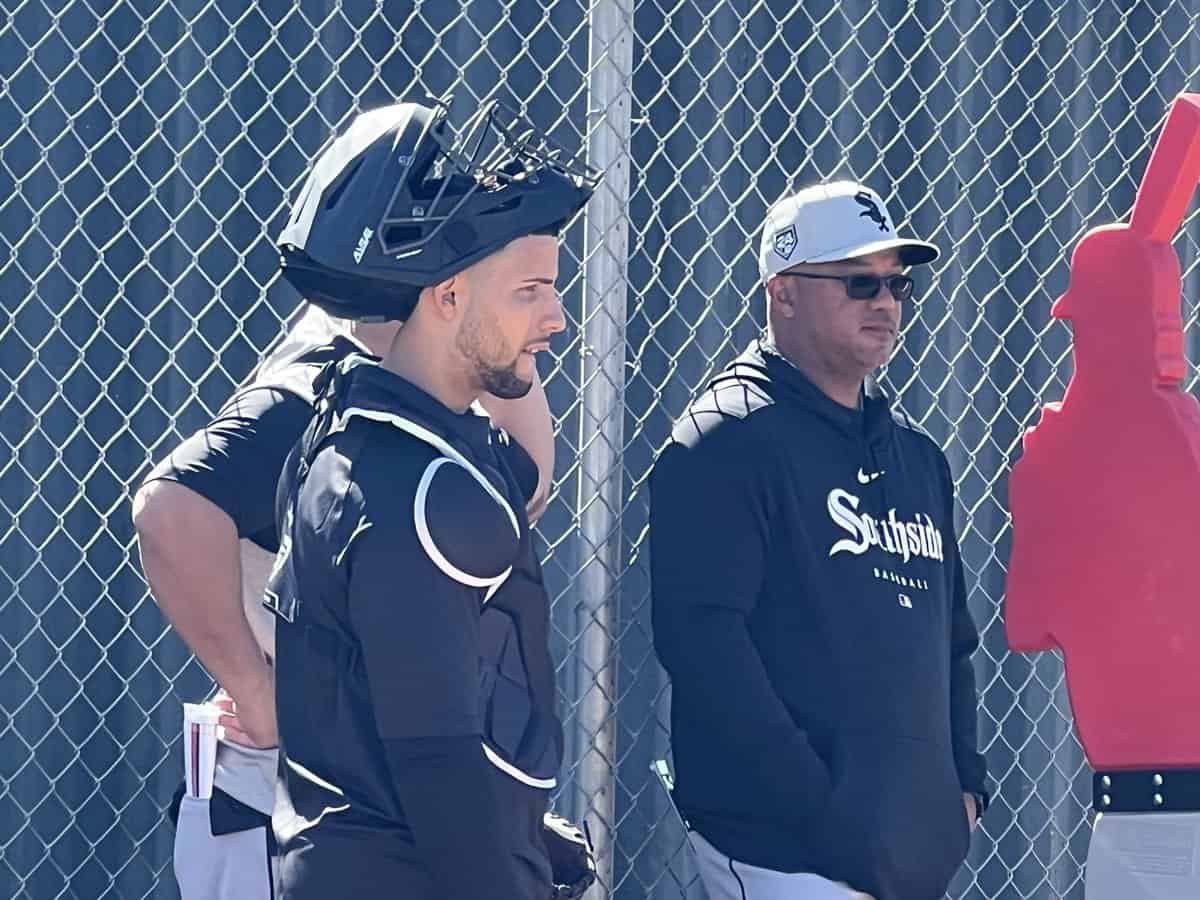The ease with which Edgar Quero tracked and whacked this diving lefty breaking ball with his right-handed swing -- as a switch-hitter it's simultaneously his natural and less used side -- suggests an interesting origin story to his catching.
While his biceps stretch the confines of his workout shirt up close, the 20-year-old's offensive profile is currently more defined by his contact ability and precocious feel for the strike zone. Given the notoriously unforgiving development path of a major league catcher, surely at some point it was suggested that Quero would fly through the minors even faster than he's currently doing at a less demanding position.
But in some cases, the answer to a question comes midway through asking it. Quero's arms remain stiffly crossed, his brow furrows. It would have been just as welcome to ask if he ever considered studying for his realtor's license.
"I started catching when I was six years old in Cuba," Quero said, outlining when his daily practice began.
"That would have pissed me off too if I was 20 years old," said Pedro Grifol, mixing his pride at Quero's determination with amusement at my apparent faux pas.
A typical White Sox practice with Spanish-speaking players is that team interpreter Billy Russo will remain by their side even as they interview in English, to step in with clarifications as needed. On this day Russo flags Quero down for me, but quickly moves on to other tasks where he's actually needed.
"In 2021 I started learning," said Quero, who feels having to communicate as a catcher accelerated the process. "I know I need to keep learning but I feel good with my English right now."
After Quero broke out on the prospect scene with a .312/.435/.530 batting line at Low-A Inland Empire in 2022, the Angels celebrated his 20th birthday by having him skip a level to Double-A. While his power numbers sagged to a .255/.380/.351 overall line last season, Quero cited learning a whole new slate of pitchers and hitters he had largely never faced before as the biggest challenge. But by the time the White Sox acquired Quero at the deadline to be their catcher of the future, quickly acquainting himself with new people while continuing to work on his English had become old hat.
An unintentional patch of continuity in the catching prospect's fast-changing world? The White Sox hired Drew Butera away from the Angels, meaning that Quero is working with the same catching instructor for the second straight spring training.
"Especially mentally, he's got a really good work ethic," Butera said. "Obviously Spanish is his first language, but he's not afraid of the conversation with guys that speak English. That speaks highly of him. He's upfront and center, he's very vocal."
Spring training is awash with these sorts of stories, but everyone -- Quero included -- keeps doubling back to his offseason weight loss, which has seen him drop from 225 to 208 pounds alongside some sort of minuscule body-fat figure. Quero brings it up specifically in response to a question about his dip in power production, miming out how he is already feeling gains in the speed at which he can rotate his hips in his swing.
"I feel l can rotate my hips hard, like in 2022," Quero said, referencing the season he played at 195 pounds. "I feel very good. I worked my ass off in the offseason. So far, so good."
Quero has never been charged with more than four passed balls in a professional season, backing up his outward confidence about his pitch-blocking. But the early tryouts with his slimmer lower half has him optimistic about improved pop times, whereas he otherwise has not thrown out 30 percent of potential basestealers since rookie ball.
As firmly established at the beginning of this interview, the most central concern to Quero is the final steps of his defensive maturation, and what his conditioning can unlock.
"Especially in the setups, I think last year he was limited in some of the stuff he could do, because of -- I don't want to say weight issue, because he wasn't fat by any means," said Butera, encountering the absurdity of how we all find ourselves talking about the conditioning of pro athletes in real time. "But him leaning up gave him more flexibility and allow them to get into better positions.
"He's working on one knee down on both sides, he's worked on two feet. To me, you can never have too many different positions to try to steal strikes. Each umpire is different, their zones are different. And if you can manipulate the ball at different positions, you have a better opportunity."
Adding Martín Maldonado and Max Stassi in the offseason leaves the Sox a veteran line of insulation from any temptation to rush up Quero. But Chris Getz has already indicated that the catcher is part of a host of prospects they would like to see force their way to a major league debut this year.
A lot of could turn on how Quero looks at the end of the season. He's seeking a contrast from last year where the Birmingham coaching staff ratcheted down his workload in response to fatigue, and mixed in some starts at DH.
Quero would prefer to catch.
"It's a hard position," Quero said. "It's really complicated. But it's my position."





